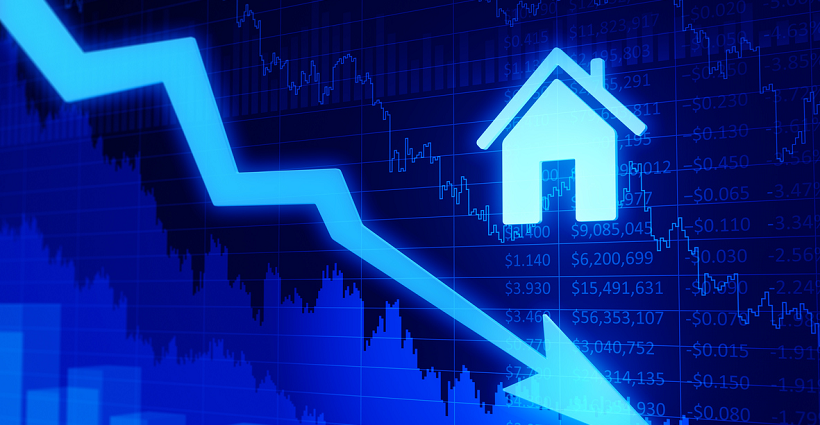PHOTO: FILE
There’s a literal and figurative chill in the air. The housing market seems to have a severe case of winter blues, if the latest economic and sales figures are any indication.
This isn’t a new issue, though. It began back in 2022. After post-COVID house prices peaked at the end of 2021, the market deteriorated in response to rising interest rates and increasing living costs.
House prices fell by 18% and didn’t hit bottom until May last year, after the Reserve Bank signaled it was done raising interest rates. That appeared to be the medicine the market needed, and prices started to pick up in the following months.
But then, after a summer rush of listings, the market took a downturn, and prices began to tumble again.
So, how sick is the property market now? And what will it take to get back to health?
REINZ JUNE 2024 FULL REPORT: Buyers Market in FULL SWING – 25% less house sales
1. Sales Up YoY but Still Below Average
Property sales are up 13% year-on-year, indicating that buyers have returned and demand is picking up. However, there are some concerning figures “under the hood.” Annual sales are still below the long-term average of 81,100 per year, and June sales figures from the Real Estate Institute of New Zealand suggest buyers are pulling back.
Nationwide sales were down 25.6% year-on-year and 32.6% month-on-month. The tally of 4,356 was the worst for June since 2008. In Auckland, the situation was even worse. Last month, sales dropped 35% year-on-year and 33.2% month-on-month to 1,287 – Auckland‘s lowest tally for a June month since records began.
How much of this sudden retreat is driven by seasonality and how much by economic weaknesses and job market uncertainty is unclear right now.
Yes, the market is past its peak sickness, but its recovery looks shaky. It still has a valid sick note.
2. Listings Up YoY, but Vendor Enthusiasm is Waning
New listings for the first six months of 2024 were up 27% compared to the same period last year, while the total number of homes for sale on OneRoof at the end of June was just over 39,000 (up 24% year-on-year). These figures indicate vendor confidence in the market, but they only tell part of the story.
Sellers flooded the market with listings in February, March, and April, hoping to cash in on the widely reported lift in house prices seen at the end of last year. However, new listings began to ease in May, then fell steeply in June, suggesting potential vendors had realized prices were falling and market conditions were less favorable (buyers had more choice and felt less pressure to buy).
The spike in listings probably accelerated the decline in house prices, although interest rates and a worsening economy likely had a more significant impact.
The number of properties for sale may increase due to the July 1 changes to the bright-line period, which has shrunk from 10 years to two years, allowing some investors to sell tax-free.
Increased listing volumes will likely dampen house price growth, but if interest rates are cut at the end of the year – as some experts forecast – growth may resume.
3. House Prices Tumbling Again
House price growth has evaporated in recent months (as expected in autumn and winter), but this shouldn’t be seen as the start of a new, prolonged slump.
There are more houses for sale than buyers, but the market outlook once rates start to fall is more positive. A year and a half ago, we didn’t know when the Reserve Bank would stop raising interest rates. Now, we know rates have peaked and will eventually come down.
Experienced buyers will use this opportunity to buy at the second “bottom of the market” and negotiate well. However, most will wait for more solid signs of recovery.
4. Consents Are Falling
Aside from a small increase in March 2024, the number of dwelling consents has been falling. They peaked in 2022, and since then, there have been fewer and fewer new dwelling consents.
This means there will be fewer new properties built in the next few years, indicating a slump in the residential construction sector.
However, this will, in some ways, aid the market’s recovery. Fewer new properties will restrict supply compared to 2022, reducing competition compared to what would have otherwise been the case.
Rather than contributing to the sickness, the low level of new dwelling consents is part of the medicine.
5. What’s the Prognosis?
The housing market is definitely past the worst of its sickness, but it’s still not well. No additional medicine is needed, just time.
Overall, the property market will likely remain weak for the next six months, though the data will be mixed.
The number of property listings will likely increase due to the bright-line test. But once interest rates drop, that will provide the natural adrenaline the market needs.
When the average buyer sees interest rates dropping, they’ll expect house prices to rise and bring forward their buying decisions. That’s when people think: “House prices are rising. I better buy now.”
This is how sickness runs its course. Even long after the chills have passed, you’ve still got some time before you recover fully.
The housing market is recovering, but it’s still going to have the odd coughing fit.
SOURCE: ONEROOF














